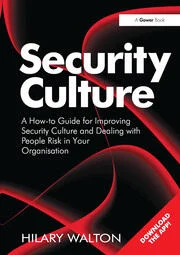From cyberattacks, natural disasters and even pandemics, critical events are bound to happen to a business. Despite the disruption, operations still need to happen.
There are many misconceptions organizations face when it comes to their business continuity communications. Here are the most common ones, followed by how your business can take a proactive approach to creating a business continuity program to face any challenge.
Employees Will Know What to Do When Disaster Strikes
The pandemic showed that some employees had to take on new and unfamiliar responsibilities in the face of a crisis. Some might not know what to do when a crisis happens. And, despite a company’s preparation, the best plans may need some modification in real time.
Review and update your employees on the company’s business continuity strategy on a yearly basis, at least. For stakeholders, use a mass notification system to communicate with them in real time so they know what to do, and are aware of your company’s status in the situation.
Everyone Can be Reached Via Text
Although text messaging is one of the most popular ways we communicate today, you can’t assume that everyone is reachable via text in a crisis. Maybe their phone died; maybe they turned it off or have it set to “do not disturb.” Or, maybe answering their phone is dangerous if already in a crisis situation.
Be sure to communicate to stakeholders across a variety of channels, including email, text, voicemail, push notifications and desktop alerts.
Just Keep Customers Informed
Although keeping your customers safe during a critical event is important, the first people you communicate with is often your employees and business partners to keep operations running. You may even need to communicate with the community at large, depending on the scenario.
Prioritize business continuity communications based on the specific critical event. Two-way communications capabilities can help you exchange updates and status feedback with employees and business partners.
The System Used Everyday Will Work Fine During a Crisis
What can go wrong in a crisis will go wrong in a crisis. Relying on your own servers and IT team is bound to create another disaster on top of the one you’re already facing.
Employing a reliable and proven alerting system that’s designed specifically for business continuity communications can easily prevent this problem. Make sure the system includes mass notifications to communicate with people quickly in real time.
Having a critical communications product with mass notification capabilities in place can prevent your organization from the pitfalls of these misconceptions and more. With the right system in place, you can keep employees informed in real-time, minimize the impact of business disruption incidents, and comply with quality, safety and operational standards. Most importantly, you can keep shareholders and customers informed and protected during crisis events.
Discover how OnSolve can help your organization can create true organizational resiliency. Explore Now










